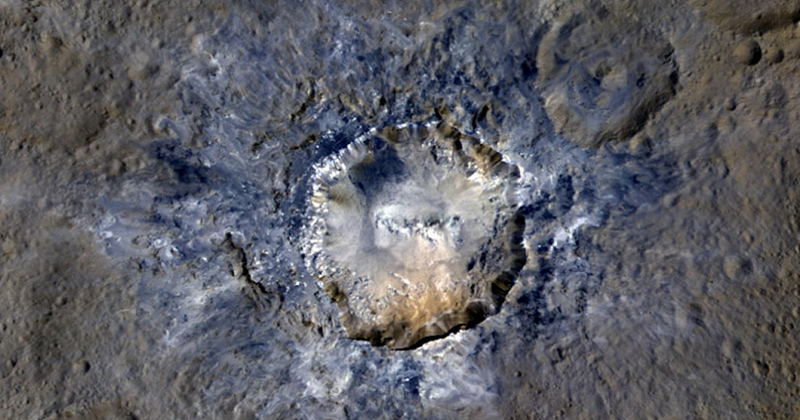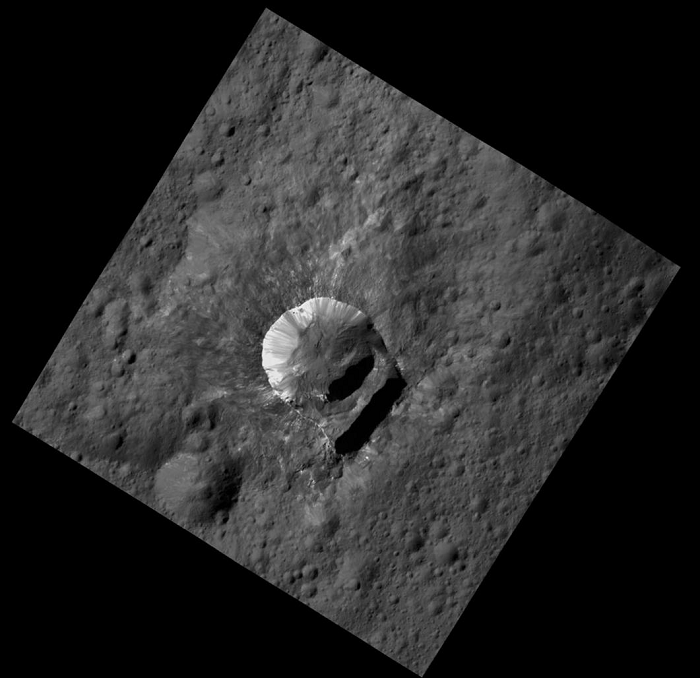
NASA Releases Spectacular Views Of Dwarf Planet Ceres
The US space agency NASA has released new images of the dwarf planet Ceres in stunning detail. The new images of the dwarf planet were from NASA’s Dawn mission. The pictures were taken 240 miles from the planet’s surface offering an incredible view of Ceres’ Haulani Crater.
The new images are providing scientists with some answers about Ceres’ geographical features, and offering new clues about what lies on its surface. The Dawn spacecraft was also utilized to observe several other features on the surface of the airless, rocky body.

Haulani Crater, with a diameter of 21 miles (34 kilometers), has shown evidence of landslides from its crater rim. An enhanced false-color view allows scientists to gain insight into materials and how they relate to surface morphology.
NASA says that the crater’s polygonal nature is interesting because most craters seen on other planetary bodies, such as Earth, are nearly circular.

“The straight edges of some Cerean craters, including Haulani, result from pre-existing stress patterns and faults beneath the surface,” it explained.
“Little Oxo may be poised to make a big contribution to understanding the upper crust of Ceres,” said Chris Russell, principal investigator of the mission.

Dawn was launched by NASA in 2007 to study protoplanets, celestial bodies that are roughly the size of our moon, in the asteroid belt. Ceres is the largest object in the asteroid belt, and is one of three targets the spacecraft is observing on its mission.